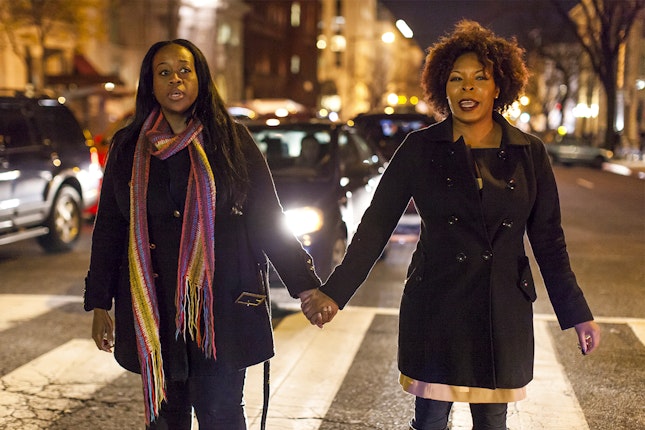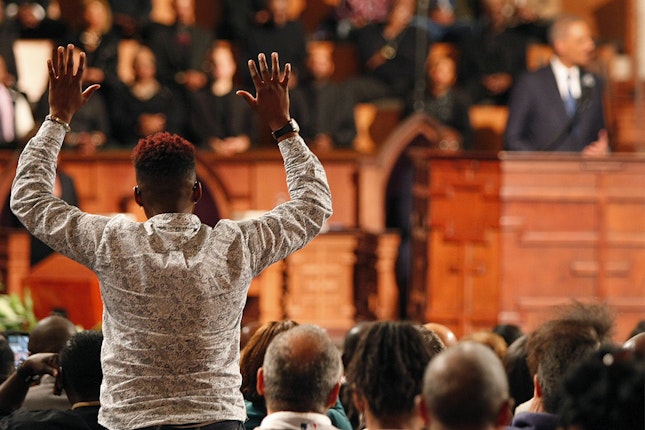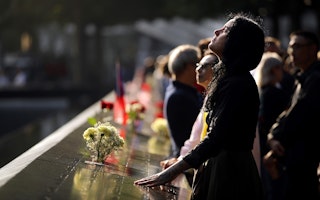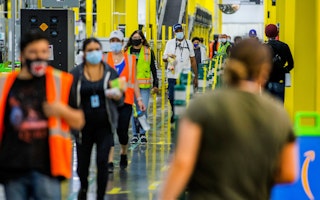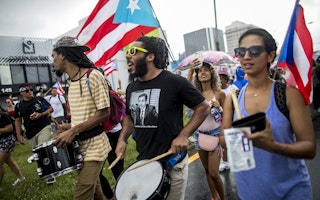Victimizing Eric Garner’s Family All Over Again
By Mark Obbie
Weeks before grand juries in Missouri and New York declined to indict police officers for the deaths of Michael Brown and Eric Garner, my work as a current Soros Justice Media Fellow brought me to a meeting one evening at a church in South Los Angeles. There, I witnessed an approach to police-involved shootings that lies at the root of America’s polarized conversation about race and justice.
At the Bethel AME Church that night, a victims’ outreach worker from the Los Angeles County District Attorney’s Office was answering questions about who is eligible for victim services. Those peppering her with questions weren’t just ordinary citizens. They were members of the Southern California Cease Fire Committee, a group of veteran violence-prevention activists working in LA’s most crime-threatened neighborhoods. And they didn’t like what they were hearing.
According to the DA’s representative, the list of who is ineligible for receiving victim services seemed almost designed to exclude many of the people they work with: anyone on probation or parole, anyone deemed uncooperative by police or whose crime wasn’t reported, or anyone who is seen as having contributed to the situation in which they got hurt. Those are big gaps in eligibility in the type of community where criminal records and victimization are both disproportionately high.
Then one well-known gang interventionist asked about a recent shooting by LA police officers of an unarmed, mentally ill 25-year-old, Ezell Ford. What about his family? “We won’t know whether or not we are able to service this family until that investigation is over,” the DA’s representative replied. Until then, the police report on Ford’s death lacks a checkmark in the box that indicates a crime was committed. No crime, no victim.
The Cease Fire members stared at her in silence. “Wow,” one man said. Just, wow.
Hitching victim services to the work of prosecutors and police, as most U.S. jurisdictions do, is no inadvertent bureaucratic choice. It indicates a mindset in which victims are good or bad, deserving of sympathy and help or not. Ultimately, it guides our definition of who counts as a victim at all. Those who report their crimes, work with the police, and are seen as believable and deserving will get whatever we’ve set aside to offer them (which still isn’t enough even at its best). The rest will mostly get the back of our hand, which is the sentiment we’re seeing—along with blatant racism—in all the talk about “thugs” like Brown and Garner who brought their deaths upon themselves.
Witness, for example, the chatter that Huffington Post justice reporter Ryan J. Reilly observed within hours of the Garner decision on PoliceOne forums, a gathering place for police:
"...the press minimizes what the criminal did..." "...who gives a fat rats ass how the cop grabbed Garner..." pic.twitter.com/MbUpzwi9FV
— Ryan J. Reilly (@ryanjreilly) December 4, 2014
Garner, “the criminal,” talked back and pulled away. Then he died. No crime, no victim.
The binary-thinking trap runs both ways. When I call criminal-justice reformers and tell them I’m writing stories about crime victims, I’m often met with an awkward pause. I know what they’re thinking. Supporting victim rights has long been synonymous with being tough on crime. Thanks to my colleagues in journalism and scare-tactic politics, the public is conditioned to see victims as law-abiding whites preyed upon by poor, urban people of color. Even though the reality contradicts those assumptions in nearly every way, the myths inform our beliefs about who commits and suffers from crime, and what they need in the aftermath.
In a recent report titled Bridging the Divide: A new paradigm for addressing safety, crime, and victimization, a coalition of victims’ advocates and criminal-justice reformers tackles this us-versus-them thinking head on. The report decries the “false choice” between, say, caring for victims or caring for young black men who find themselves in aggressive street confrontations with the police. And it urges a set of policies geared toward healing and prevention. It’s a promising sign that advocates from both sides are searching for alternatives to shouting past each other.
Perhaps what’s to blame for all the animosity is the very dynamic of an adversarial system. We’re asking our grand juries whether someone broke the law, when what we really want to know is whether someone deserved to die.
Would a different set of questions lead to a calmer, just, more reasoned outcome? Consider, for example, an alternative philosophy called restorative justice which asks the questions, who was harmed and what help do they need? These questions might not be totally sufficient to deal with a case as combustible as a fatal police-involved shooting, but their focus on accountability instead of punishment has worked to bring peace where ethnic hatred has torn societies apart.
Back in Los Angeles, next Thursday will mark four months since the death of Ezell Ford. The case remains under investigation. So far, at least, no crime has been found to have been committed. And so Ford and his family are not victims in the eyes of the law.
Mark Obbie is a 2014 Soros Justice Fellow. He blogs about his work and about narrative journalism on criminal justice at markobbie.com.
Mark Obbie is a 2014 Soros Justice Fellow.



